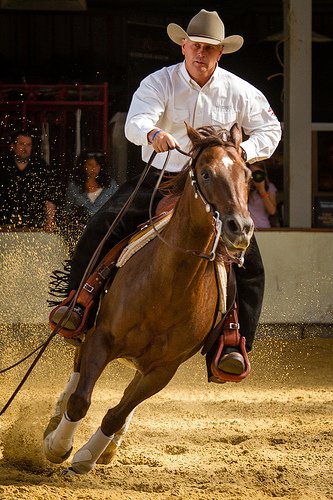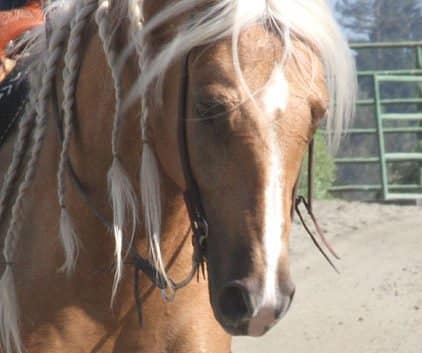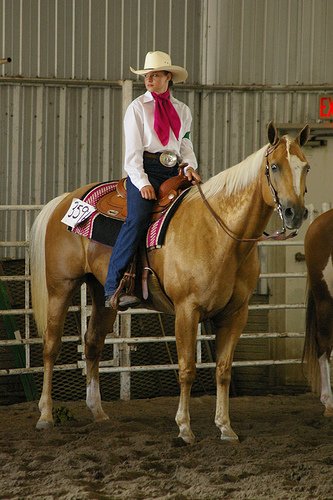
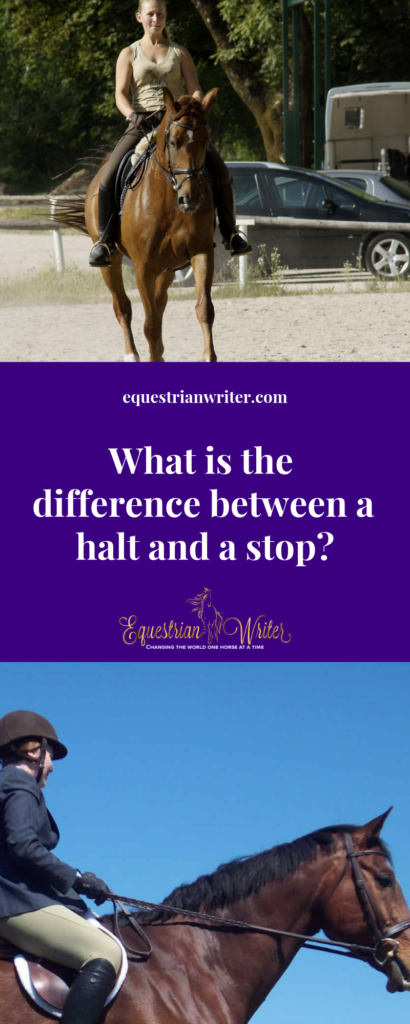
No matter your discipline, at some point in the show pen you are going to be asked to halt. The halt is a deceptively simple maneuver that is often overlooked in the practice pen. Too many times, I see riders confuse “halt” with “stop riding.” There is a huge difference.
The Mechanics of the Halt
[click_to_tweet tweet=”Teaching a proper halt requires forward momentum. #horses #247equestrian” quote=”Teaching a proper halt requires forward momentum. “]
Many riders, when asked to halt, completely stop riding. They essentially throw away the reins and lose all contact with the horse’s mouth. The horse loses collection and sloppily fumbles into a stop. Then the rider wonders why they can never get a square halt.
A proper halt is actually a forward movement. I know, it sounds like an oxymoron. When you execute a proper halt, the horse never loses collection. He should be ready to move off again, soft and collected, at a moment’s notice. You need to maintain contact with the reins and the horse should maintain softness through the poll.
The common western method actually makes the halt into a backward movement with each halt transitioning into a backup to encourage the horse to stop deep with their hind end underneath them. But when first teaching the backup, I prefer the dressage method. Later, once the horse is stopping light off my seat with forward momentum, I will switch to the western method and turn the halt into a backwards movement.
The Dressage Halt
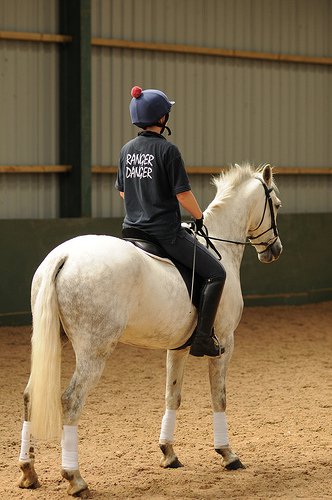
As discussed, the dressage halt is a forward movement. This is easiest to teach using half halts. For those who may not know what a half halt is, the simplest explanation is that a “half halt” is an “almost halt” used the check the horse and collect them without changing gait.
The common thought when preparing for a halt might be to start slowing the horse down to prepare for the downward transition. In fact, we want to do the opposite. We don’t want to speed up so much as lengthen the stride and impulsion to drive the horse up into the halt to ensure a crisp, square halt. Half halts should be used to collect the horse as you drive him into the stop.
That being said, don’t go expecting a perfect halt right away. I like to do a few “drive-bys” first where there is a moment of suspension and hesitation right where the halt should be, but then push the horse out of the halt again before he quite gives the whole thing. You’ll be amazed how quickly he starts offering the full halt and trying to give it to you. You don’t want to beg your horse to halt. You want him to give it willingly and you want him to think it was his idea. Doing a few “drive-bys” implants the idea and, before you know it, he’ll be getting the idea to give a full halt.
The Western Halt
The deep western style halt is the end goal for many western riders. Once you’ve got a horse giving a nice, square dressage halt. You will start transitioning to a deep western halt. The transition is quite simple. As soon as you halt, transition immediately into a backup. The horse will begin anticipating the backup and start stopping deeper over their hocks.
I personally like to preserve the option to use both halts. To cue a square dressage halt, simply sit on my seat bones and close my legs in a proper dressage halt. For the deeper western halt, I sit harder and lean back ever so slightly while closing my legs and taking up the reins.
The Stop
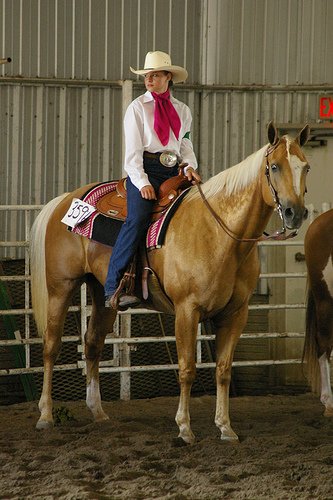
The stop is reserved for the end of the ride once the last halt is executed. Then reins can be let out as a signal that the ride is over and it is time to relax. This is the only time when a stop should be used. Stopping in the middle of the ride is counterproductive as you are throwing away all collection and forcing yourself to start back at square one.
Photo by pamzpix






